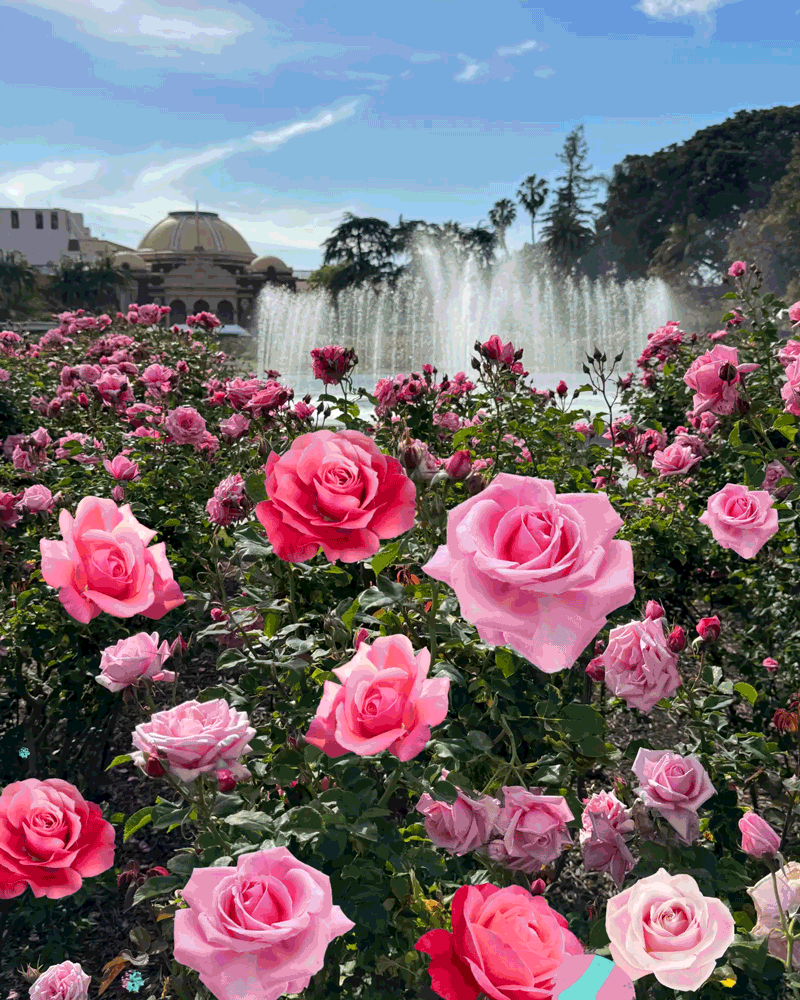Fans’ Budding Dilemma Ends : Enthusiasts Must Enter African Violets by Today or Shrink From Fair’s Competition
- Share via
Florence Naylor of Ventura owns about 400 miniature African violets. Her collection includes pink ones and purple ones, white ones and blue ones.
*
Marcia Shaver of Thousand Oaks tends a mere 100 of the plants, known for their deep green leaves and vibrantly hued blooms. Shaver’s violets are distributed in stands and on windowsills in a spare bedroom.
Between the two of them, Naylor and Shaver probably possess enough plants to fill the Ventura County fair’s entire African violet display. Despite months of plucking, pruning and fretting over their finicky plants, however, both women are wavering on whether they want to enter any violets in this year’s fair competition.
“They just aren’t blooming,” said a frustrated Naylor, who has decided to enter only two of her beloved plants in this year’s contest.
Shaver believes that none of her violets is beautiful enough to compete. Instead, she will donate about four or five plants for an exhibit booth, where her plant-growing reputation will not risk coming up short against those of green-thumbed colleagues. For African violet growers and other potted-plant enthusiasts--specifically, owners of ferns, wax plants, ivy, begonias, orchids--today is the deadline they’ve been anticipating since last year’s fair ended.
At 6 p.m. today judges will pull out their note pads and begin the process that ends in blue ribbons for some, red and white ribbons for others--and the embarrassment of not making the cut at all for a multitude of dedicated plant enthusiasts.
The fear of failure was so intense, in fact, for Scottie Dubay of Port Hueneme, that last year he refused to enter any of his violets.
“I always say, ‘I’ll show, I’ll show,’ but then I always back out at the last minute,” he said. “My plants are like kids to me, and I don’t want other people being critical of them. I’m critical enough of them myself.”
Dubay, 32, figures he spends 50% to 60% of his free time with his violets, most of which are displayed in a living room bookshelf-type fixture. Over each shelf hangs a fluorescent light that provides African violets with the optimum growing environment.
This year, Dubay hopes to muster up his resolve and enter “Sheer Heaven,” one of his favorite plants, in the contest. It is a full-sized violet, with deeply pink blossoms and green leaves shot through the same pink color.
Dubay admires it so much he has made a “baby” of it from its cuttings--so if he does enter it, he would not risk the health of his other plants by bringing Sheer Heaven back from the fair. “The fair is so open that (the violet) could end up bringing pests home,” he explained, coddling the plant in his hands.
*
Dubay has witnessed firsthand the destructive power of voracious bugs. This spring, Marla Henderson, his mentor in growing African violets, threw out all but 50 of her 400 beloved violets after an insect infestation.
Henderson, 63, a retired bookkeeper and Ventura resident, is still recovering.
“I really went through some buggy times earlier this year,” she sighed.
A back injury prevents Henderson from getting out in the garden and digging, so the indoor plants give her the perfect outlet for her green thumb.
With the fair looming on the horizon, Henderson has gone into overdrive in recent weeks. She selected her favorites in May, then blitzed them with a series of treatments designed to maximize their blooming potential.
Called “disbudding,” the process involves changing the fertilizer brand, increasing the plants’ “daylight” hours under fluorescent bulbs, and snipping off buds that blossom too early.
“You have to really be on the ball when they start blooming early,” she said. “I’ve been . . . praying a lot.”
Henderson, who belongs to both the Ventura County African Violet Society and the Thousand Oaks African Violet Society, started tending the blooming plants when a friend gave her some eight years ago.
But many members of the county’s two African violet clubs say they began their love affair with violets at the grocery store. According to African Violet Magazine, African violets are the most popular houseplants in America.
The plant traces its history to Africa’s deep tropical jungles, where the flowers flourished in the low light.
According to the magazine, Europeans took interest in the violets in 1892, when Baron Walter von Saint Paul sent specimens of the plant home to his father in Germany. The baron was serving as imperial governor of East German Africa--now Tanzania--at the time. The transplanted vegetation landed in the Royal Botanical Gardens in Hanover, where it received its scientific name, Saintpaulia, in honor of the Saint Paul family.
Importers introduced African violets commercially in the United States in the late 1920s, according to the African Violet Magazine, which is published by the African Violet Society of America. The society was organized in 1946, the same year it held its first show, an Atlanta, Ga., convention that attracted about 9,000 people from 11 states.
*
Today, the two Ventura County clubs alone will in good years see their members submit up to 100 plants for the individual plant competition, said Ventura County club member Jean Shipley. There are also garden and educational exhibit competitions pitting the African violet clubs against each other as well as clubs organized around other plants.
Naylor, who owns the 400 miniatures, hopes her two sufficiently budding violets stand up respectably to the tough competition. Nearly all the fair submissions come from violet society members.
By day a chemist for Clairol, Naylor has been a violet addict since the early days of her marriage.
She said she opened her car door on April 1, 1975 to find three pretty, blooming violet plants on her car seat, a gift from her new husband.
“It started out as an April Fool’s joke,” she said, laughing. “But now, the joke’s on him.”






